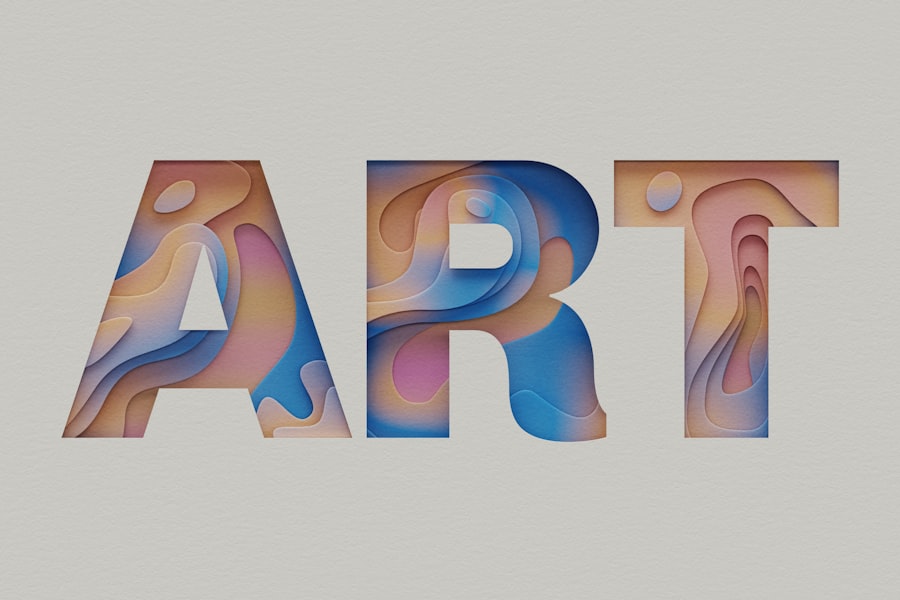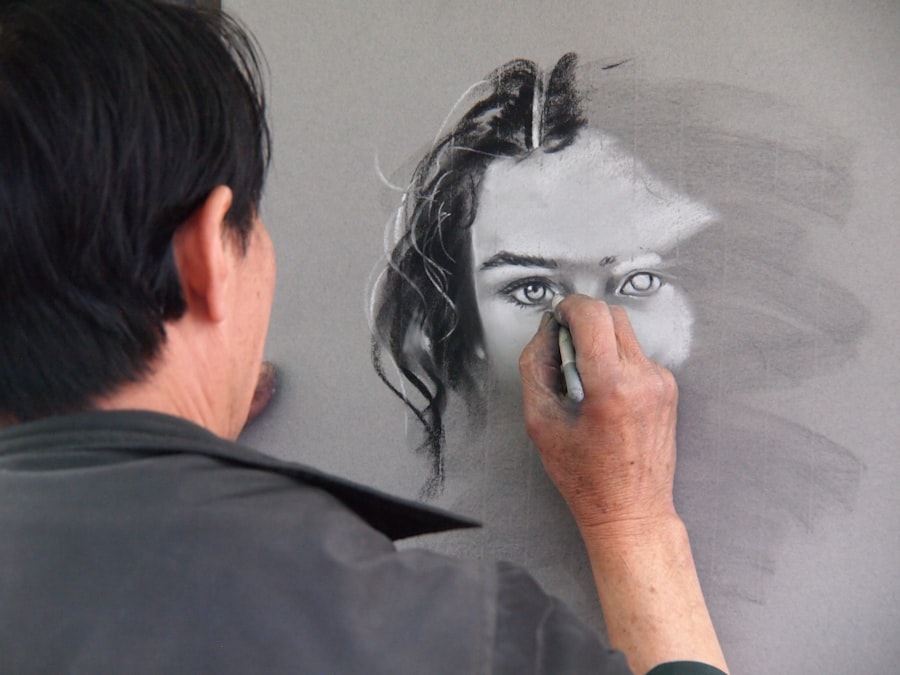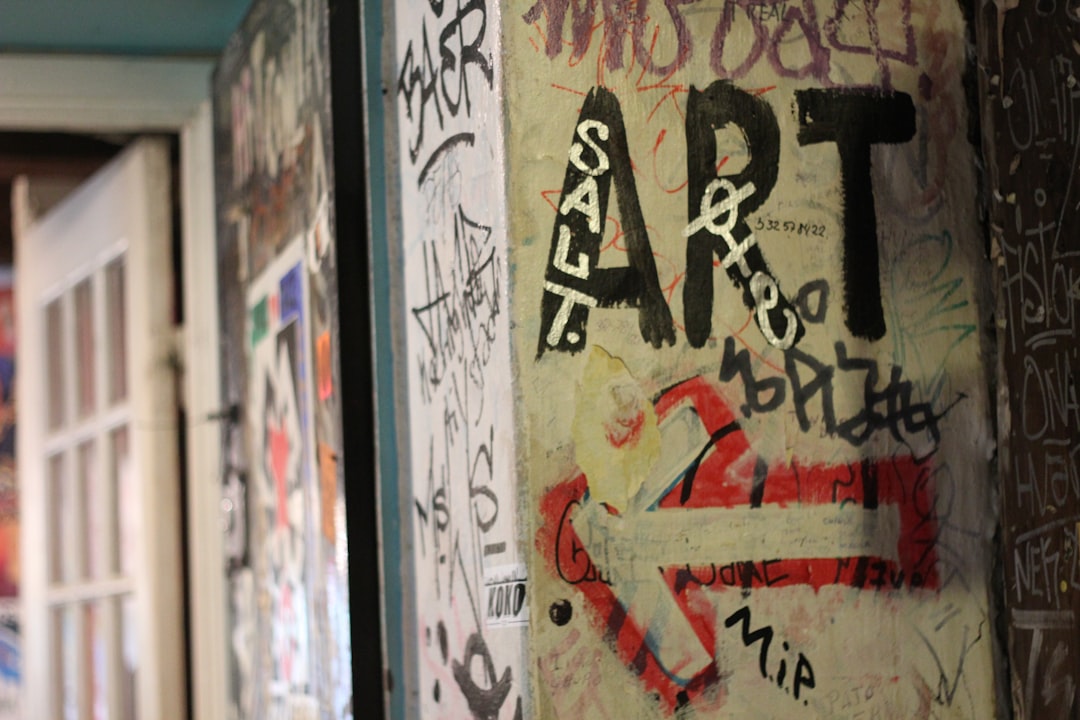As you delve into the world of art, you may find yourself captivated by the emergence of artificial intelligence (AI) as a creative force. AI art refers to artwork generated or significantly influenced by algorithms and machine learning techniques. This innovative approach has sparked a revolution in how art is created, perceived, and valued.
The intersection of technology and creativity has opened up new avenues for expression, challenging traditional notions of artistry and authorship. As you explore this fascinating domain, you will discover how AI is reshaping the landscape of artistic creation and what it means for both artists and audiences alike. The rise of AI art is not merely a trend; it represents a profound shift in the creative paradigm.
With the ability to analyze vast datasets and learn from existing artworks, AI can produce pieces that mimic various styles or even create entirely new forms of expression. This capability raises intriguing questions about the nature of creativity itself. Can a machine truly be considered an artist?
Or does the essence of art lie solely in human experience and emotion? As you navigate these questions, you will gain insight into the broader implications of AI’s role in the art world.
Key Takeaways
- AI art has the potential to revolutionize the traditional art world by introducing new techniques and styles.
- The advancements in AI art technology have led to the creation of stunning and thought-provoking artworks.
- AI plays a significant role in the creative process by assisting artists in generating new ideas and exploring innovative concepts.
- The potential for job displacement in the art industry is a concern as AI continues to evolve and take on more creative tasks.
- Artists must navigate the ethical and legal implications of AI art, including issues of authorship and ownership.
The Impact of AI on Traditional Art
The advent of AI has undeniably impacted traditional art forms, prompting both excitement and apprehension among artists and critics. For many, the integration of technology into the creative process has opened up new possibilities for experimentation and innovation. Artists can now leverage AI tools to enhance their work, allowing for a fusion of human intuition and machine precision.
This collaboration can lead to unique outcomes that challenge conventional artistic boundaries, encouraging you to rethink what constitutes art in the modern age. However, this technological encroachment has also raised concerns about the authenticity and value of traditional art. Some artists fear that reliance on AI could dilute the emotional depth and personal touch that characterize human-created works.
As you consider these perspectives, it becomes clear that the relationship between AI and traditional art is complex. While AI can serve as a powerful ally in the creative process, it also poses existential questions about the future of artistic expression and the role of the artist in a rapidly evolving landscape.
The Advancements in AI Art Technology

As you explore the advancements in AI art technology, you’ll find that the tools available to artists have become increasingly sophisticated. Machine learning algorithms can now analyze styles, techniques, and themes from countless artworks, enabling them to generate original pieces that reflect a blend of influences. Programs like DeepArt and DALL-E have gained popularity for their ability to transform photographs into stunning artworks or create entirely new images based on textual descriptions.
These innovations not only enhance artistic capabilities but also democratize access to creative tools, allowing anyone with an internet connection to experiment with art creation. Moreover, the continuous evolution of AI technology means that its potential applications in art are virtually limitless. As you witness these advancements unfold, you may be inspired by the ways in which artists are harnessing AI to push boundaries and explore uncharted territories.
From interactive installations that respond to viewer input to generative art that evolves over time, the possibilities are as diverse as they are exciting. This dynamic environment encourages you to embrace change and consider how these technologies can enrich your own artistic practice.
The Role of AI in the Creative Process
| Metrics | Statistics |
|---|---|
| Percentage of creative professionals using AI | 65% |
| Impact of AI on creative productivity | 30% increase |
| Accuracy of AI-generated content | 90% |
| Time saved by using AI in creative process | 50% |
Incorporating AI into your creative process can be both exhilarating and daunting. On one hand, AI can serve as a valuable collaborator, providing inspiration and generating ideas that you may not have considered on your own. By analyzing patterns and trends within your work or across various artistic movements, AI can help you identify new directions for exploration.
This partnership allows you to focus on refining your vision while leveraging technology to enhance your creative output. On the other hand, relying too heavily on AI can lead to questions about authorship and originality. As you engage with these tools, it’s essential to maintain a balance between human creativity and machine-generated content.
The most compelling works often arise from a harmonious interplay between intuition and technology, where your unique perspective shapes the final outcome. By embracing AI as a tool rather than a replacement, you can navigate this evolving landscape while preserving the essence of your artistic voice.
The Potential for Job Displacement in the Art Industry
As AI continues to make strides in the art world, concerns about job displacement loom large. Many fear that automation could render certain artistic roles obsolete, particularly in fields such as graphic design or illustration where algorithms can produce high-quality work at a fraction of the time it takes a human artist. This shift raises important questions about the future of employment within the creative sector and how artists can adapt to an increasingly automated landscape.
However, it’s crucial to recognize that while some roles may be at risk, new opportunities are also emerging as a result of AI’s integration into the art world. As you consider this duality, you may find that artists who embrace technology and develop skills in collaboration with AI will be better positioned to thrive in this changing environment. By focusing on areas where human creativity and emotional depth are irreplaceable—such as conceptual development or experiential installations—you can carve out a niche that highlights your unique talents while leveraging the advantages offered by AI.
The Ethical and Legal Implications of AI Art

The rise of AI art brings with it a host of ethical and legal implications that warrant careful consideration. One pressing issue is authorship: if an artwork is generated by an algorithm, who holds the rights to that piece? As you ponder this question, you’ll find that current copyright laws often struggle to keep pace with technological advancements, leaving artists and creators in a gray area regarding ownership and attribution.
Additionally, there are concerns about bias in AI algorithms, which can inadvertently perpetuate stereotypes or exclude marginalized voices from the artistic narrative. As you engage with these ethical dilemmas, it’s essential to advocate for transparency and inclusivity within the development of AI technologies. By fostering discussions around these issues, you can contribute to shaping a more equitable future for all artists in an age where technology plays an increasingly prominent role.
The Future of AI Art in the Art Market
As you look ahead to the future of AI art within the art market, you’ll find that its presence is becoming more pronounced. Galleries are beginning to showcase AI-generated works alongside traditional pieces, challenging collectors to reconsider their definitions of value and authenticity. This shift has sparked debates about what constitutes “real” art and whether machine-generated pieces can hold emotional significance comparable to those created by human hands.
Moreover, as collectors become more open to embracing AI art, new platforms are emerging that cater specifically to this niche market. Online marketplaces dedicated to digital art are gaining traction, allowing artists to reach wider audiences while exploring innovative ways to monetize their work. As you navigate this evolving landscape, consider how these developments might influence your own artistic practice and how you can position yourself within this burgeoning market.
The Challenges and Opportunities for Artists in the Age of AI
In an era defined by rapid technological advancement, artists face both challenges and opportunities as they navigate the rise of AI art. On one hand, adapting to new tools and techniques can be daunting; mastering complex algorithms or understanding data-driven processes may feel overwhelming at times. However, embracing these challenges can also lead to personal growth and expanded creative horizons.
As you confront these obstacles, remember that opportunities abound for those willing to experiment with AI technologies. By integrating these tools into your practice, you can unlock new avenues for exploration and innovation that may have previously seemed unattainable. Collaborating with AI can inspire fresh ideas and push your artistic boundaries, ultimately enriching your work while allowing you to remain relevant in an ever-evolving landscape.
The Importance of Human Creativity in the Age of AI Art
Despite the impressive capabilities of AI in generating artwork, it is essential to recognize the irreplaceable value of human creativity. Your unique experiences, emotions, and perspectives shape your artistic voice in ways that machines cannot replicate. While AI can assist in generating ideas or refining techniques, it lacks the depth of understanding that comes from lived experience.
As you navigate this intersection between human creativity and artificial intelligence, consider how your individuality can shine through even when collaborating with technology. Emphasizing your personal narrative within your work will ensure that it resonates on a deeper level with audiences who seek connection through art. In this way, human creativity remains at the forefront of artistic expression, even as technology continues to evolve.
Strategies for Artists to Adapt to the Rise of AI Art
To thrive in an age increasingly influenced by AI art, it’s crucial for you as an artist to develop strategies for adaptation. First and foremost, consider expanding your skill set by learning about various AI tools available for artists today. Familiarizing yourself with software like generative design programs or machine learning platforms will empower you to incorporate these technologies into your practice effectively.
Additionally, networking with other artists who are exploring similar themes can provide valuable insights and foster collaboration opportunities. Engaging in discussions about the implications of AI on creativity will help you stay informed about industry trends while allowing you to share your own experiences navigating this evolving landscape. By remaining open-minded and adaptable, you’ll position yourself for success as an artist in an age defined by technological innovation.
Navigating the Intersection of AI and Art
As you reflect on the intersection of artificial intelligence and art, it’s clear that this dynamic relationship presents both challenges and opportunities for artists today.
Ultimately, the future of art lies not solely in machines but in the harmonious collaboration between human creativity and technological innovation. As you continue your journey as an artist in this age of AI art, remember that your perspective is invaluable—one that can shape conversations around creativity’s role in our increasingly automated world. By embracing change while staying true to your artistic vision, you’ll contribute meaningfully to a vibrant future where both human expression and artificial intelligence coexist harmoniously within the realm of art.
The rise of AI art has sparked a significant debate about its impact on traditional artists and the job market. As AI technology continues to evolve, many artists are concerned about the potential for AI-generated art to replace human creativity and craftsmanship. This concern is not unfounded, as AI can produce artwork at a fraction of the time and cost it takes a human artist, leading to fears of job displacement. For a deeper understanding of how AI is influencing various industries, including art, you can read more in this related article that explores the broader implications of AI on the economy and job market.
FAQs
What is AI art?
AI art refers to artwork created with the assistance of artificial intelligence. This can include anything from paintings and drawings to music and poetry generated by AI algorithms.
How does AI art relate to job displacement?
AI art has the potential to automate certain aspects of the creative process, which could potentially impact jobs in the art and design industries. This has raised concerns about the potential displacement of human artists and designers by AI-generated art.
What are the potential impacts of AI art on jobs?
The rise of AI art could lead to changes in the job market for artists and designers. While AI may not completely replace human creativity, it could impact certain roles and tasks within the creative industries.
Are there any benefits to AI art in terms of job creation?
While there are concerns about job displacement, AI art also has the potential to create new opportunities and roles within the creative industries. For example, AI tools and platforms could enable artists and designers to explore new creative possibilities and expand their skill sets.
How are artists and designers responding to the rise of AI art?
Many artists and designers are embracing AI as a tool for creativity, using it to enhance their work rather than seeing it as a threat. Some are even collaborating with AI systems to explore new artistic possibilities.
What are some ethical considerations surrounding AI art and job displacement?
Ethical considerations around AI art and job displacement include ensuring fair compensation for artists and designers, addressing potential inequalities in access to AI tools and resources, and considering the impact of AI on the diversity and inclusivity of the creative industries.
